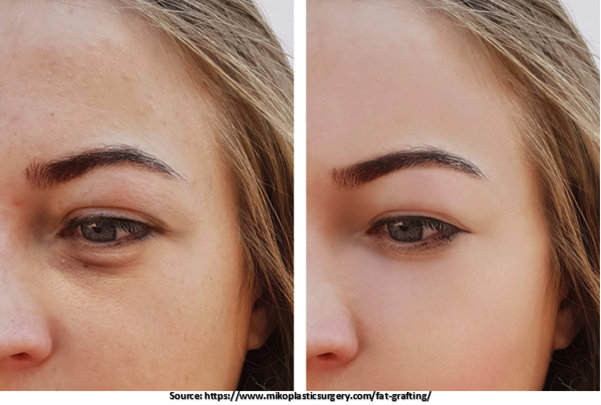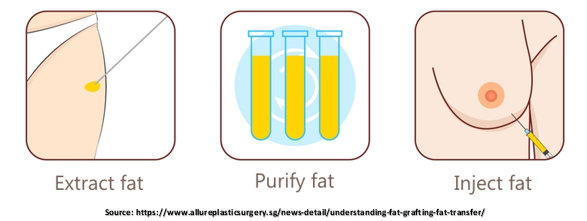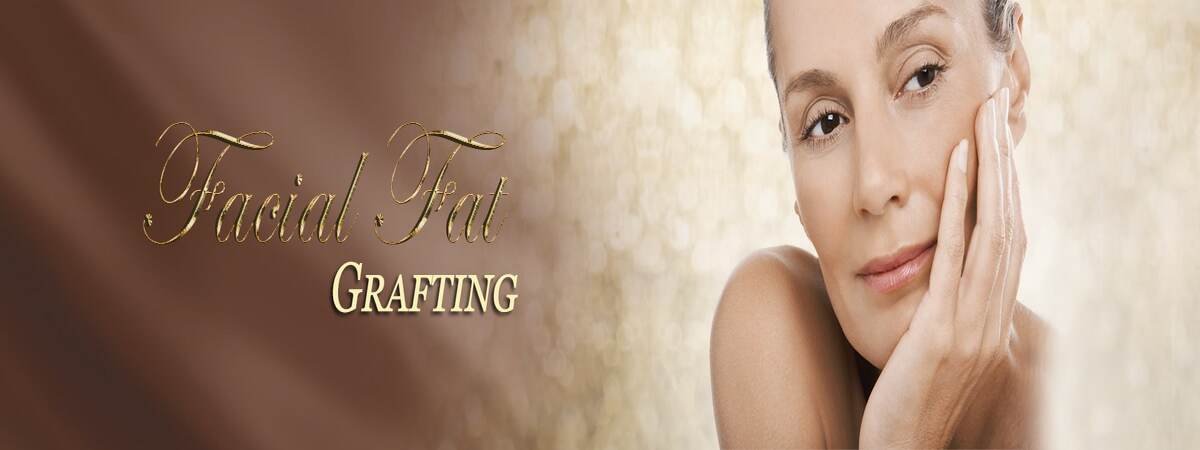
A fat grafting, often known as fat injection, involves transferring fat from places with excessive fat, like the outer thighs, and injecting the fat into areas requiring volumes, such as the face, breasts, hands, or buttocks. This process is safe, long-lasting, and well-tolerated, and the results are natural-looking. Thousands of individuals are happy with the outcomes of effective fat grafting every year.
Areeva Cosmetic Surgery Centre offers safe, advanced, and cost-efficient fat grafting in Navi Mumbai by Dr. Audumbar Borgaonkar. Dr. Audumbar is considered one of the best plastic surgeons in Navi Mumbai. Furthermore, he has handled more than 2000 patients to date.

Besides, Dr. Audumbar has conducted fat grafting on several patients in 13+ years of his service. So, he obtained great expertise in fat grafting procedures. Therefore, his patient recognizes him as one of the leading fat grafting doctor in Navi Mumbai. Moreover, he is adept in various cosmetic procedures, including rhinoplasty, lip correction, scar revision, etc.
First, let’s know,
When should fat grafting be considered?
- If you have wrinkled and sunken facial skin.
- If you want a lasting solution that temporary fillers cannot give.
- If you want to enhance your body shape, scars, fill physical depressions and revitalize your hands and face, this procedure is for you.
- Fat grafting can be used in breast reconstruction to hide visible evidence of breast implants or fill in contour abnormalities.
Let’s discuss,
The Pros and Cons of Fat Grafting
Pros:
- Fat grafting reduces the chance of allergic reactions to foreign substances.
- Fat transfer results are natural, long-lasting, and safe.
- Fat transfer is a non-invasive method for achieving facial rejuvenation.
Cons:
- It is a time-consuming process.
- It is expensive than derma fillers.
- It may require multiple sessions to achieve desired outcomes.
Now, let’s know,
What is the cost of fat grafting in Navi Mumbai?
A fat grafting treatment cost varies from doctor to doctor, clinic's location, and body area requiring fat grafting. The cost of fat grafting may comprise surgeon fees and exclude payments for the surgical facility, anaesthesia, medical testing, prescriptions, surgical clothes, and other fat transfer-related charges.
Because fat grafting is an elective cosmetic treatment, many insurance companies don't finance it. To make the treatment more accessible, several surgeons offer financing plans.
Now, let’s understand,
How is fat grafting performed?
Fat grafting is a three-step procedure that includes harvesting, purification, and transfer, and fat injection.
Harvesting: The surgeon will choose a fat removal site with the patient's permission and inject it with local anaesthesia. Next, the surgeon will make a tiny incision in the desired location for fat removal. Then, gently introduce a cannula attached to a syringe to extract fat (liposuction) using a sterile technique.

Purification and transfer: After extracting enough fat from the donor site, the surgeon will treat the fat cells for transferring to tiny syringes used for fat injection. Before injection, the surgeon will purify the fat in a centrifuge to eliminate contaminants.
Fat injection: Further, the surgeon will prepare the location of graft placement. The surgeon will insert a needle or cannula into the incision location of the augmented site. Typically, the surgeon carries the injection needle in and out of the enlarged region several times.
A line of fatty tissue components is meticulously placed in natural tissue planes each time the needle or cannula is removed. The surgeon will continue this procedure until achieving the necessary correction. The surgeon may apply a dressing or bandage to the grafted region.
Our plastic surgeon aims to achieve the most beautiful and natural-looking results and make the surgical experience as easy and comfortable as possible.
Now, let’s discuss,
The Different Types of Fat Grafting Procedures
1. Facial fat transfer:
Fat can be taken from your abdomen, thighs, or other regions and injected into your face if you have facial wrinkles such as laugh lines or smile lines. Acne scars, depressed areas of the face, lips, and cheeks can be filled.
2. Breast augmentation:
Fat grafting to the breast is a fantastic option if you want a modest increase in breast size. Breast augmentation with fat transfer is not for you if you have poor skin, drooping breasts, or want a considerable increase in breast size.
3. Breast implantation with fat grafting:
Fat grafting may be beneficial if you want to increase the breast shape during a breast implant treatment.
4. Breast reconstruction with fat grafting:
If you have breast deformities resulting from a lumpectomy for breast cancer, fat grafting is an excellent way to fill them. Fat grafting can also restore the whole breast after a mastectomy.
5. Buttock augmentation with fat grafting:
People who want a more prominent, rounded buttock can opt for a buttock augmentation involving fat transfer rather than implants to give a curvier buttock.
6. Hand rejuvenation with fat grafting:
Fat grafting into the hands efficiently increases volume, “plumping up” wrinkled regions, covering underlying veins and tendons, and gradually enhancing the quality of your skin.
How should the patient prepare for a fat grafting procedure?
- The surgeon will provide comprehensive preoperative guidance, clarify the patient’s doubts, record complete medical history, and conduct a physical exam to determine the patient’s fitness for this procedure.
- The surgeon may take pre-procedure photographs.
- The surgeon will ask the patient to refrain from smoking for at least six weeks before the treatment to avoid poor wound healing and scarring.
- The surgeon will also instruct to avoid taking aspirin, nonsteroidal anti-inflammatory drugs (NSAIDs), vitamins, and homeopathic regimens that can cause excessive bleeding.
- The patient must stay hydrated. Hydration is essential before and after any fat grafting procedure to ensure a healthy recovery.
Now, let’s know about,
Aftercare and Recovery
The patient should ask the doctor about when they can resume daily activities.
After surgery, the patient and their caregiver will get specific instructions about the postoperative care, such as information regarding:
- Drains, if they have been placed.
- Usual symptoms the patient will experience.
- Any potential signs of complications.
Let’s know the,
Limitations and Risks Associated with Fat Grafting
Fortunately, fat grafting has a low risk of severe consequences. This treatment is usually carried out without incident.
The risks and probable complications of surgery should be discussed with the surgeon. The following are some of the risks associated with fat grafting:
- Adverse reaction to anaesthesia
- Build-up of blood or fluid beneath the skin
- Infection
- Changes in sensation
- Scarring
- Damage to underlying structures
- Undesirable results that may require additional procedures
Certain risks can be minimized by following the advice and instructions of the plastic surgeon, both before and after fat grafting.
If you want to know more about fat grafting in Navi Mumbai, schedule an appointment with Dr. Audumbar Borgaonkar to determine your suitability for fat transfer procedures.

